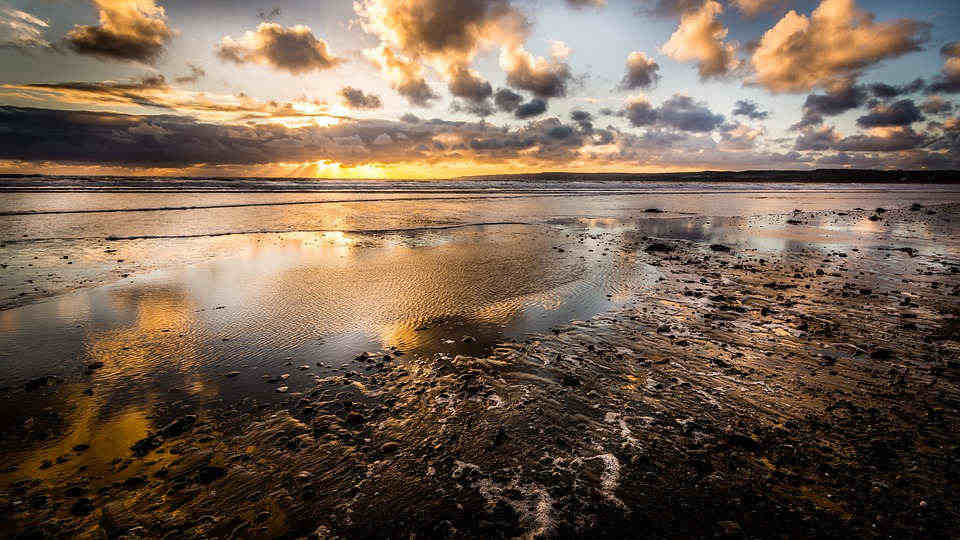The ocean is one of the biggest natural phenomena. So much of it is already discovered, but yet, it remains a great mystery to mankind. However, in this article, we are going to have a look at one of its most known occurrences, the tides.

Tides describe the change in sea levels. Scientists differentiate between high tide and low tide. When the tide is high, the ocean’s water rises and at low tide, it slowly falls back. They can be pictured as very long-period waves that move through the ocean, each occurring twice a day. High tide usually lasts for about six hours, same goes for low tide.
The forces that are responsible for this movement are called tidal constituents. In this case, there are two tidal constituents. One of them is the Earth’s rotation around its own axis and the major constituent is the gravitational force of the moon and the sun. The gravitational force is the force that pulls two bodies together and, generally speaking, the closer objects are, the greater the gravitational force is between them. Since the sun is further away from the earth, its gravitational pull on the earth is not as strong as the moon’s pull. This is the reason as to why it is mostly the moon that is responsible for tides. The moon always stretches the side of the planet that it is facing and pulls the body of water towards it.
Its tidal force is the strongest on the side of the earth facing the moon and the weakest on the side facing the opposite direction. These differences in the gravitational force result in the ocean bulging outwards in two places at the same time, one bulge being on the side facing the moon and the other one on the opposite side of the earth. This last one can be pictured as the moon’s tidal force pulling the planet, and not the ocean, toward it. These bulges are what we know as high tides. There are two different kinds of high tides. The high tide on the side of the earth facing the moon is called high high tide and the one on the opposite side is called low high tide. Between both of these high tides are the so-called low tides and the water flow from high tide to low tide is called ebb tide.
As already mentioned, the tides occur twice a day. This is due to the second tidal constituent, the earth’s rotation around its own axis. When an area faces the moon, they are experiencing high tide (high high tide) and as the earth rotates, the area moves away from the moon and the tide ebbs. Therefore, low tide occurs in that area and since the earth keeps rotating, the area then moves to the side of the earth on the opposite of the moon, resulting in the low high tide. The earth continues spinning, the tide ebbs and another low tide occurs. The 24 hour cycle then starts all over again.
When we hear the word tide, we usually associate it with water but in reality, the moon exerts a tidal force on the whole planet, the water, as well as landmass. The tidal force on the Earth’s land surfaces is called terrestrial tide. Since the land surfaces are less flexible, the moon’s force only has little effect on them. However, they can move up to 55 centimeters per day. These terrestrial tides are being closely studied by volcanologists, because the movement in the Earth’s crust can sometimes trigger a volcanic eruption.
Tides can be both beneficial and harmful for mankind which makes it important to be aware of its effects. Especially if you want to go swimming, I urge you to inform yourself about the timings to make sure that you don’t find yourself in an ebb tide which can be very dangerous.
Other than that, have fun swimming!
Sources:
https://education.nationalgeographic.org/resource/cause-effect-tides (National Geographic, December 20th, 2022)
https://moon.nasa.gov/resources/444/tides/#:~:text=The%20Moon%20and%20Earth%20exert,are%20where%20low%20tides%20occur. (NASA Science, December 20th, 2022)
https://earthhow.com/ocean-tides/ (Oceans, Water Science, December 20th, 2022)

